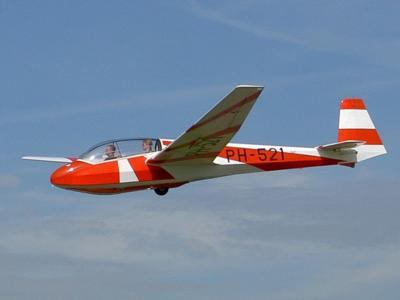AD 2022-12-07 Requires Repetitively Inspecting The Glue Joint At Elevator Rib Number 1
The FAA is superseding Airworthiness Directive (AD) 75-23-03 for all Alexander Schleicher GmbH & Co. Segelflugzeugbau (Alexander Schleicher) Model Ka2B, Ka 6, Ka 6 B, Ka 6 BR, Ka 6 C, Ka 6 CR, K 7, K 8, and AS-K 13 gliders.

AD 75-23-03 required visually inspecting the glue joint between the elevator nose rib number 1 and the nose plywood skin and replacing the glue joint if insufficient glue adhesion was found. Since the FAA issued AD 75-23-03, the European Union Aviation Safety Agency (EASA) superseded prior EASA ADs for the unsafe condition on these products. This AD adds the Model K 8 B gliders to the applicability and requires repetitively inspecting the glue joint at elevator rib number 1 and repairing any damage found. The FAA is issuing this AD to address the unsafe condition on these products. This AD is effective July 21, 2022.
Supplementary Information: The FAA issued a notice of proposed rulemaking (NPRM) to amend 14 CFR part 39 to supersede AD 75-23-03, Amendment 39-2414 (40 FR 50706, October 31, 1975) (AD 75-23-03). AD 75-23-03 applied to all Alexander Schleicher Model Ka2B, Ka 6, Ka 6 B, Ka 6 BR, Ka 6 C, Ka 6 CR, K 7, K 8, and AS-K 13 gliders. AD 75-23-03 required visually inspecting the glue joint between the elevator nose rib number 1 and the nose plywood skin and replacing the glue joint if insufficient glue adhesion was found.
The NPRM published in the Federal Register on March 28, 2022 (87 FR 17204). The NPRM was prompted by AD 2021-0230, dated October 14, 2021 (referred to after this as “the MCAI”), issued by EASA, which is the Technical Agent for the Member States of the European Union.
The MCAI states:
- An occurrence was reported of structural failure of an elevator during winch launching of a K 7 sailplane. Subsequent investigation results determined that the occurrence was due to damaged glue of the elevator's rib No. 1.
- This condition, if not detected and corrected, could affect the structural integrity of an elevator, possibly resulting in reduced control of the aeroplane.
- To address this potential unsafe condition, Schleicher issued the glued joint inspection TN [Technical Note], as defined in this [EASA] AD, to provide inspection instructions and LBA Germany issued AD 72-7 (later revised) to require those actions.
- Since that [LBA Germany] AD was issued, additional similar occurrences were reported of structural elevator failure, also on (powered) sailplanes originally not affected by LBA 72-7/3. Prompted by this development, Schleicher issued the applicable TN, providing inspections instructions for all (powered) sailplanes having an elevator of a similar design and making the inspections dependent also on the number of take-offs.
- For the reason described above, this [EASA] AD supersedes LBA Germany AD 727/3 [dated December 13, 1989] and requires repetitive inspections of the elevator and, depending on findings, accomplishment of applicable corrective action(s).
In the NPRM, the FAA proposed to require repetitively inspecting the glue joint between elevator rib number 1 and the plywood skin and repairing if necessary. In the NPRM, the FAA also 3 proposed to add Model K 8 B gliders to the applicability. The FAA is issuing this AD to prevent structural failure of an elevator, which could lead to loss of glider control.
You may examine the MCAI in the AD docket at https://www.regulations.gov by searching for and locating Docket No. FAA-2022-0293.
 ANN's Daily Aero-Term (04.25.24): Airport Rotating Beacon
ANN's Daily Aero-Term (04.25.24): Airport Rotating Beacon ANN's Daily Aero-Linx (04.25.24)
ANN's Daily Aero-Linx (04.25.24) Klyde Morris (04.22.24)
Klyde Morris (04.22.24) Airborne 04.24.24: INTEGRAL E, Elixir USA, M700 RVSM
Airborne 04.24.24: INTEGRAL E, Elixir USA, M700 RVSM Airborne 04.22.24: Rotor X Worsens, Airport Fees 4 FNB?, USMC Drone Pilot
Airborne 04.22.24: Rotor X Worsens, Airport Fees 4 FNB?, USMC Drone Pilot



